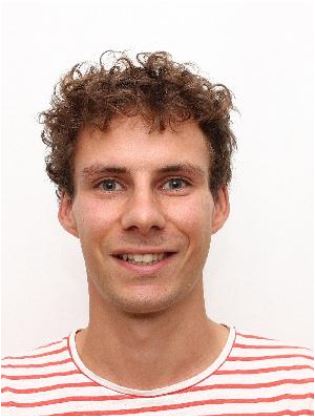Microfluidic impedance cytometers for the study of single-cell calcifying algae
Douwe de Bruijn is a PhD student in the research group Biomedical and Environmental Sensorsystems. Supervisors are prof.dr.ir. A. van den Berg and dr.ir. W. Olthuis from the Faculty of Electrical Engineering, Mathematics and Computer Science.
 The elevated concentration of anthropogenic carbon dioxide (CO2) in the atmosphere is causing ocean acidification, impacting oceans globally. Calcifying algae, like coccolithophores, have a large impact on the oceanic carbon cycle. Two processes in the marine carbon cycle are important for the effective CO2 flux: the organic carbon pump (photosynthesis) and the inorganic carbon pump (calcification). The ratio between these two processes (i.e. the “rain ratio”) is of particular interest for ocean carbon models.
The elevated concentration of anthropogenic carbon dioxide (CO2) in the atmosphere is causing ocean acidification, impacting oceans globally. Calcifying algae, like coccolithophores, have a large impact on the oceanic carbon cycle. Two processes in the marine carbon cycle are important for the effective CO2 flux: the organic carbon pump (photosynthesis) and the inorganic carbon pump (calcification). The ratio between these two processes (i.e. the “rain ratio”) is of particular interest for ocean carbon models.
In this thesis the unicellular coccolithophore species Emiliania huxleyi was investigated using microfluidic impedance cytometry, enabling quick, non-invasive and label-free analysis of single coccolithophore cells. The work focuses on the assessment of the calcium carbonate exoskeleton (PIC: particulate inorganic carbon) with respect to the organic cell (POC: particulate organic carbon), which is closely related to the rain ratio and thus a key characteristic in the ocean carbon cycle.
The applicability of two different microfluidic flow cytometers was studied. The first cytometer discriminated calcified and decalcified coccolithophore cells based on their vertical position in the sensor, owing to differences in mass density. The second cytometer explored the cell’s dielectric response at multiple frequencies, independent of the cell position, enabling the assessment of single-cell PIC:POC ratios.
Additionally, the correlation between electrical opacity and the particle position in an inhomogeneous electrical field was investigated and subsequently used to determine particle sizes accurately. The accuracy was further improved using a simple machine learning approach.
Overall, this thesis describes the development of impedance based microfluidic tools to investigate calcifying algae, which may help improve parameterization of ocean carbon prediction models.




